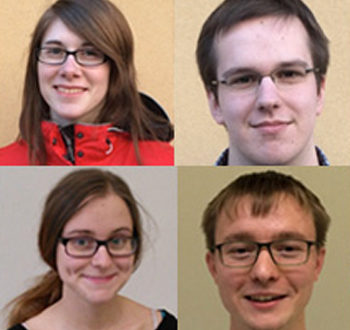Lenovo has joined Intel’s code modernisation enablement programme and invested in young talent at the 2015 International Supercomputing Conference (ISC) this week.
Lenovo is sponsoring the 2015 Student Cluster Competition at this year’s ISC event. The competition features small teams that compete to demonstrate the capabilities of high-performance cluster hardware and software.
In a real-time challenge, 11 teams of six undergraduate or secondary school students will build a small cluster of their own design on the ISC exhibit floor and race to demonstrate the greatest performance across a series of benchmarks and applications.
Held in collaboration of the HPC Advisory Council and ISC, the Student Cluster Competition is designed to introduce the next generation of students to the high performance computing world and community – be it in the field of scientific research or commercial systems.
In other news, Lenovo has adopted Intel’s high-performance computing (HPC) scalable system framework for next-generation products. The framework enables systems to scale performance, power and cost from small multi-node clusters up to large HPC deployments.
”Lenovo has a strong legacy in computing and is making substantial investments in High Performance Computing,” said Charles Wuischpard, VP Datacenter Group, GM of Workstations and HPC at Intel.
“We’re excited that Lenovo is joining the program to help end users maximize application performance using open standards based programming models, and we look forward to partnering with Lenovo to deliver innovative next generation products based on Intel’s HPC scalable system framework.”
Plus, Lenovo and Mellanox have announced a new partnership to accelerate the adoption of new fabric and server technology to speed up automotive design efficiency.
“High-performance computing simulations are dramatically increasing in the manufacturing segment especially in Automotive which requires the right amount of computing power and high-performance interconnect. Lenovo’s solution for this segment is spot on and will provide tremendous value to clients to get their products to market faster, said Gilad Shainer, VP of Marketing at Mellanox Technologies.
Additionally, the expansion of High Performance Computer SuperMUC has been put into operation at the Leibniz Supercomputing Centre LRZ, pushing the maximum theoretical computing power of SuperMUC to 6.8 Petaflops.
"SuperMUC will continue to be one of the most energy efficient supercomputers in the world," said Lenovo in a statement.
Prof. Dr. Arndt Bode, Head of LRZ, commented: "SuperMUC Phase 2 opens up new ways for exciting and novel research – from the study of asthma of child patients to the origin of the universe – everything based on the use of one of the most powerful and energy-efficient supercomputers in the world, delivered by IBM and Lenovo."
Commenting on the company’s focus on HPC, VP of Strategic Alliances and General Manager of HPC worldwide at Lenovo, Brian Connors, said: “HPC continues to be at an exciting time for our industry but in particular an exciting time for Lenovo.
"We see great opportunities for worldwide growth in the mainstream commercial HPC market and our global footprint, deep knowledge of the China market and heritage in the commercial sector makes us a natural fit for customers wanting to work with a true global player – whether it be for analytics; big data analysis or commercial systems for industries such as manufacturing, financial services, medical and energy."
 PCR Tech and IT retail, distribution and vendor news
PCR Tech and IT retail, distribution and vendor news



